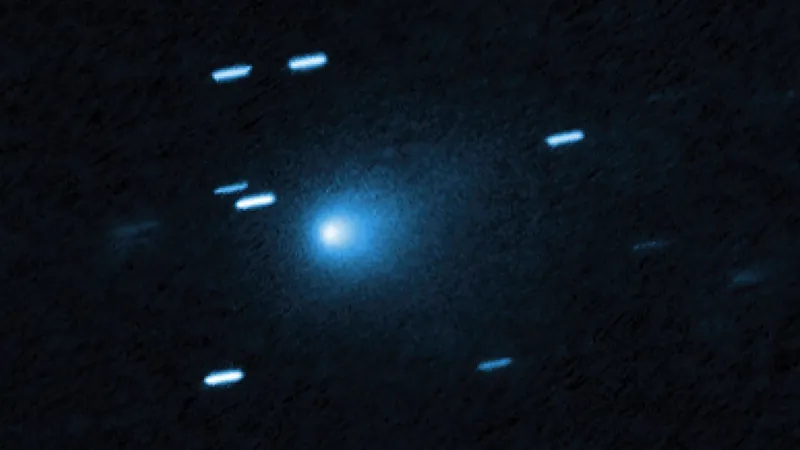
Could Interstellar Wanderers Like Comet 3I/ATLAS Be the Secret to Creating Exoplanets?
2025-09-17
Author: Arjun
The Age of Interstellar Theory: Are We Alone?
Astronomers have ventured into bold new territory with a groundbreaking theory on how planets may form, and it all hinges on one enigmatic phenomenon: interstellar visitors. Forget about extraterrestrial life; think instead of cosmic travelers like the unusual comet 3I/ATLAS, which captured attention this summer.
Interstellar Objects: Nature’s Seedlings?
In a fascinating revelation presented by Professor Susanne Pfalzner from the Forschungszentrum Jülich at a recent science congress, these interstellar objects could potentially act as "seeds" for the development of exoplanets orbiting infant stars. This theory sheds new light on the intricacies of planetary formation.
The Accretion Paradox: A Cosmic Puzzle
Typically, planetary formation is attributed to the process known as accretion — where tiny particles within gas and dust disks collide and coalesce to form planets. However, there's a conundrum: collisions involving larger objects tend to result in bouncing or fragmentation rather than unification.
Unlocking Planet Formation with Interstellar Bodies
Pfalzner’s simulations suggest that these interstellar wanderers, expelled from foreign star systems, could become entrenched in planet-forming disks. By providing significant mass, they may enable further accumulation of material, essentially providing a shortcut past the challenges of traditional planet formation.
A Game Changer for Gas Giants?
This idea also holds the key to another cosmic mystery: why gas giants, akin to Jupiter, are frequently located around more massive stars. Interestingly, protoplanetary disks surrounding these stars last only about 2 million years, which is not enough time for substantial gas giant formation. However, the infusion of interstellar objects might expedite the process immensely.
Efficient Formation Around Massive Stars
"Higher-mass stars have a greater efficiency in capturing these interstellar bodies within their disks," noted Pfalzner. This means that systems seeded with interstellar objects are likely to see faster planet formation, particularly for giant planets. The rapid formation we observe could very well be attributed to this newly discovered phenomenon.
The Future of Cosmic Exploration
As we dive deeper into the cosmos, the implications of Pfalzner's theory may reshape our understanding of planetary systems and their origins. Could these interstellar seeds be pivotal in the grand scheme of galactic ecology? The answer might just transform our view of life beyond Earth.



 Brasil (PT)
Brasil (PT)
 Canada (EN)
Canada (EN)
 Chile (ES)
Chile (ES)
 Česko (CS)
Česko (CS)
 대한민국 (KO)
대한민국 (KO)
 España (ES)
España (ES)
 France (FR)
France (FR)
 Hong Kong (EN)
Hong Kong (EN)
 Italia (IT)
Italia (IT)
 日本 (JA)
日本 (JA)
 Magyarország (HU)
Magyarország (HU)
 Norge (NO)
Norge (NO)
 Polska (PL)
Polska (PL)
 Schweiz (DE)
Schweiz (DE)
 Singapore (EN)
Singapore (EN)
 Sverige (SV)
Sverige (SV)
 Suomi (FI)
Suomi (FI)
 Türkiye (TR)
Türkiye (TR)
 الإمارات العربية المتحدة (AR)
الإمارات العربية المتحدة (AR)